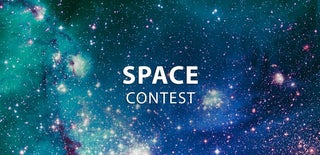Introduction: Easy Astrophotography
This instructable will teach you how to make an astrophotography, including the imaging session and the image processing.
This instructable is made for everyone, no knowledge is required.
Supplies
You will need :
- a camera (in the best case a dslr, but a smartphone in pro mode)
- a support (a tripier at best, but you can use anything, a shoe, a chair...)
- a computer (the powerful you can use)
Step 1: The Setup :
First thing you must do is to prepare your setup.
To make an astrophotography, we don't take a single picture. The light of the nebulae is very poor and the light pollution doesn't help us. That's why we take a lot of raw pictures with an exposure time usually higher than 1 min with a motorized mount.
The earth is turning around an axis from the north pole to the south pole. It means that the sky will move, like the sun. So we will take pictures with an exposure time of 5 seconds to avoid star trails because we don't have a mount to track.
Try to use the shortest focal length you have and the fastest optics (shortest F/D).
Set your camera to produce raw files and set the sensibility on 1600ISO.
Make sure you camera is charged and go to the step 2 !
Step 2: The Night :
When the night came, the moon isn't up and there are not any clouds, it's time to take the pictures.
Place your setup on a open place and align it with the target you want to image.
You will now have to focus the photo lens. If you have a bright star in the field, try making it the smallest as possible. To have a better focus you can also use a bahtinov mask, but I will not explain it anymore.
Then start taking your pictures.
Don't forget to recenter your target every 5 min in the camera.
Take around 200 pictures, even if the most you take better the pic will be.
When you have finish you will take three types of pictures used in the processing :
-The flats : the hardest to make, you need an uniform source of light like the sky in the day or anything else. You must change the exposure to don't saturate, take 30 of these.
-The darks : these are pictures made with the same exposure time and the same ISO as the sky pictures but with the optics masked, take around 30 pic.
-The offsets : you will need to set the shortest exposure, the lowest ISO and mask the optics again. Make again 30 of these.
Step 3: The Processing :
For this part we will need two free software, siril (https://siril.org/) and Gimp (https://www.gimp.org/downloads/).
Then Download your pictures in a folder in the computer.
I recommend using this tutorial. But instead of saving it in jpeg, save it as a .tiff.
Then open it in Gimp and in the menu "colors", use "hue-chroma", "saturation" and "brightness and contrast" to have the best image as possible.
Finally, use the menu "filters", go to "enhance" and use the "noise reduction". Zoom on your image and try to find the good parameter to have some details but without noise.
Now you can export you picture as jpeg and share it !
Thank you very much for reading it !
I hope you enjoyed.
L.A

Participated in the
Space Contest









